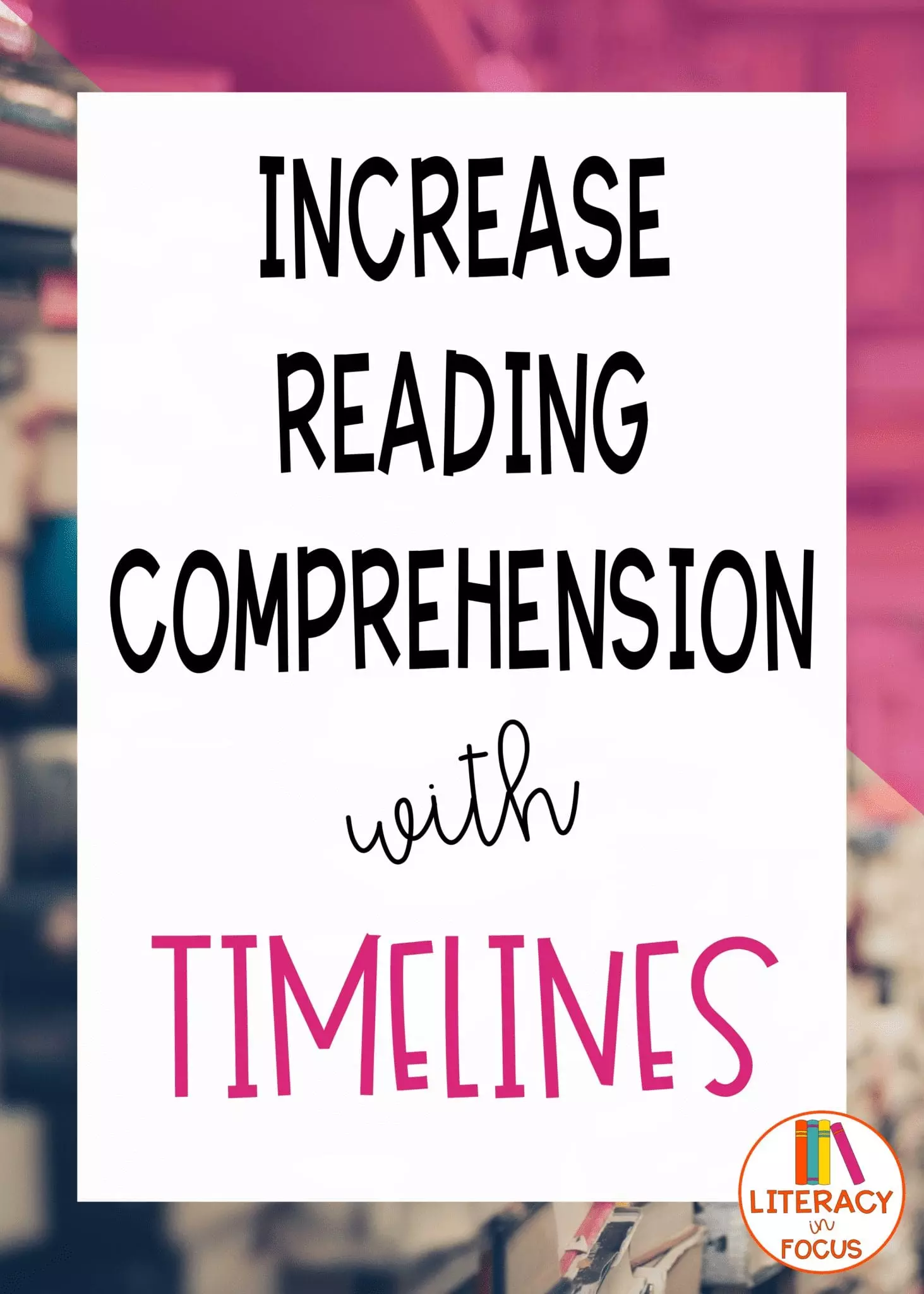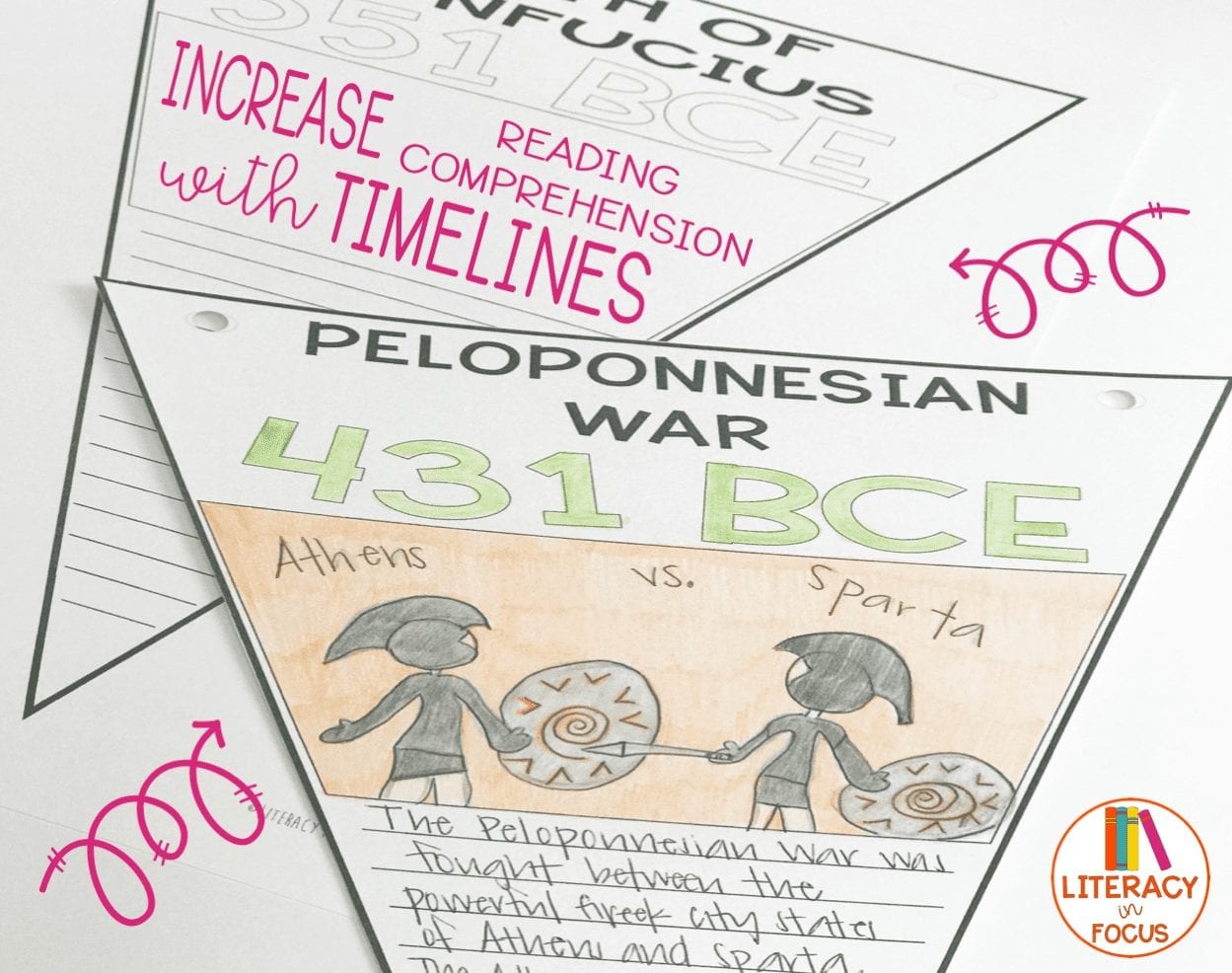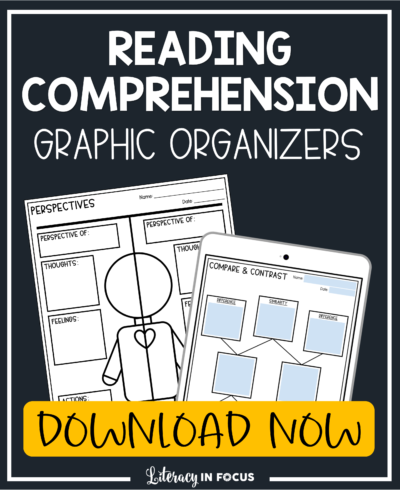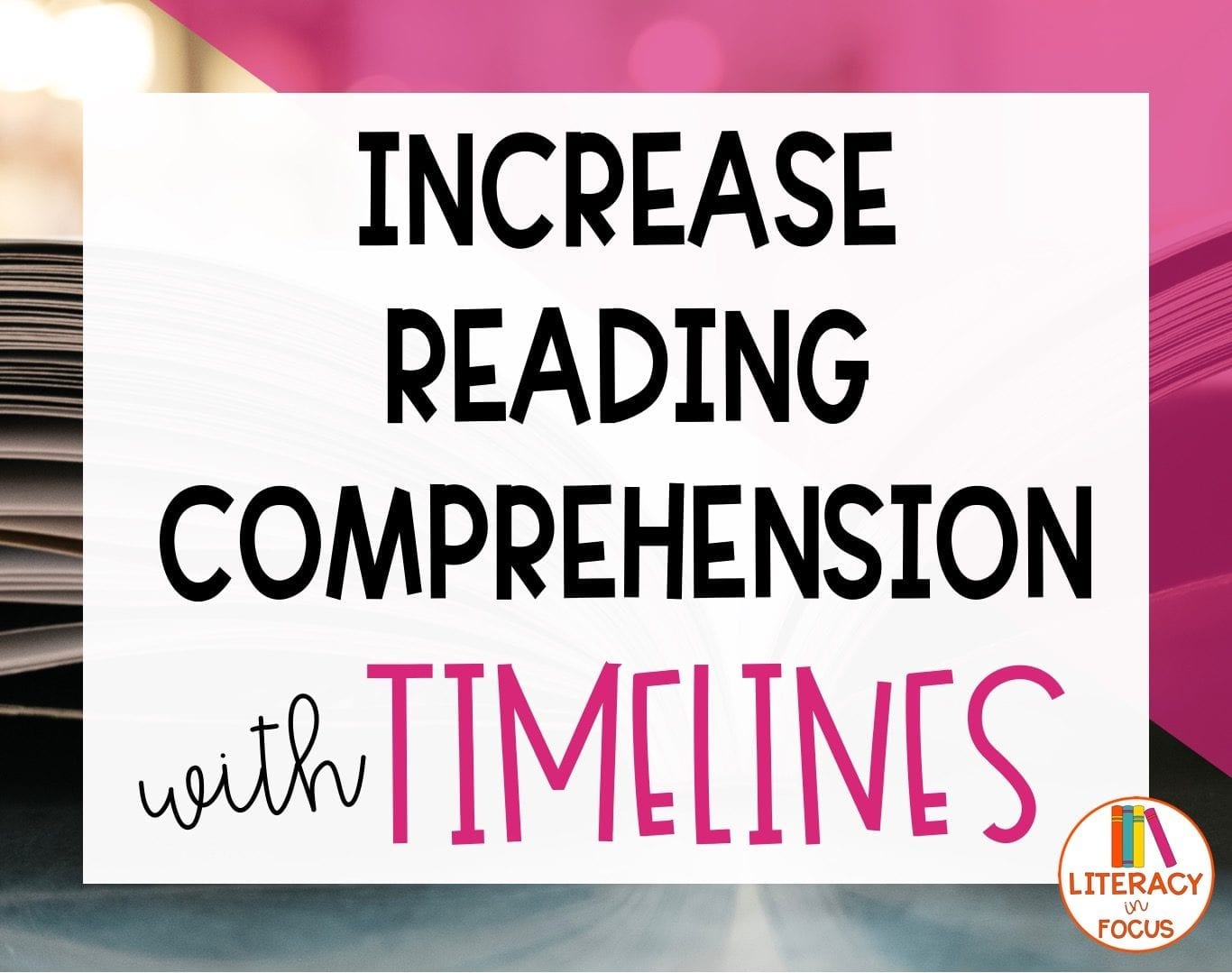
When we think about timelines, we think of the linear fashion that is most often used to record historical dates. While that is the most popular use of timelines, I think it’s fair to say that they have the potential to be used in a variety of different educational settings. Timelines work well across all grade levels and content areas. They are also a great way to incorporate differentiation. Although the timeline itself is highly versatile and can be implemented in different ways and different subject areas, there are a few distinct ways timelines can be used to increase reading comprehension. You can use timelines to help students organize information into a concise summary, identify cause and effect, or to compare and contrast different approaches to the same topic or event.
Summarizing
Traditionally, timelines have been used to organize events in chronological order. There is definitely something to be said about the benefits of being able to organize information chronologically, but it can also be taken a step further. After accurately arranging the events in the correct order, students can then synthesize the information into a concise summary. Writing a concise summary is a skill that must be learned. When asked to write a summary, students have a tendency of including too much information or even copying the text word for word. Plotting important events on a timeline provides students with a visual frame of reference, which will help when it’s time to condense the material into a summary. The timeline then becomes more than just practice with chronological order, but also a way to build summary writing skills. Additionally, organizing events in sequential order using a timeline is extremely beneficial for English language learners and students with special needs. Timelines can appear visually less complex than pure text, helping ELLs and students with special needs more easily relate events to their corresponding times. I think it’s fair to say that the visual aspect of the timeline gives all students a stronger foundational context for understanding the information being presented.
Cause and Effect
Identifying cause and effect is a skill that is necessary for reading both informational text and literature, which means it is an important aspect of many different content areas. Students need to be able to analyze the structure of a text on a deeper level. Timelines can be used as a scaffolding tool to help students see the relationships between events or ideas in the text. For example, arranging events on a timeline gives students an opportunity to take a second look at the information. It also lays out the textual context in a different format. What might have been missed while reading the text has the potential to be noticed in a timeline. If a student can see that one event precedes another, they might be more likely to identify causation. Overall, timelines provide a visual aid for identifying cause and effect relationships between events, and a visual prompt to activate students’ prior knowledge, making connecting those events an easier task. The same idea also applies to identifying problems, solutions, and patterns, which is an excellent alternative for supporting inquiry-based learning. Thinking differently about timelines will allow you to cover more ground with less time.
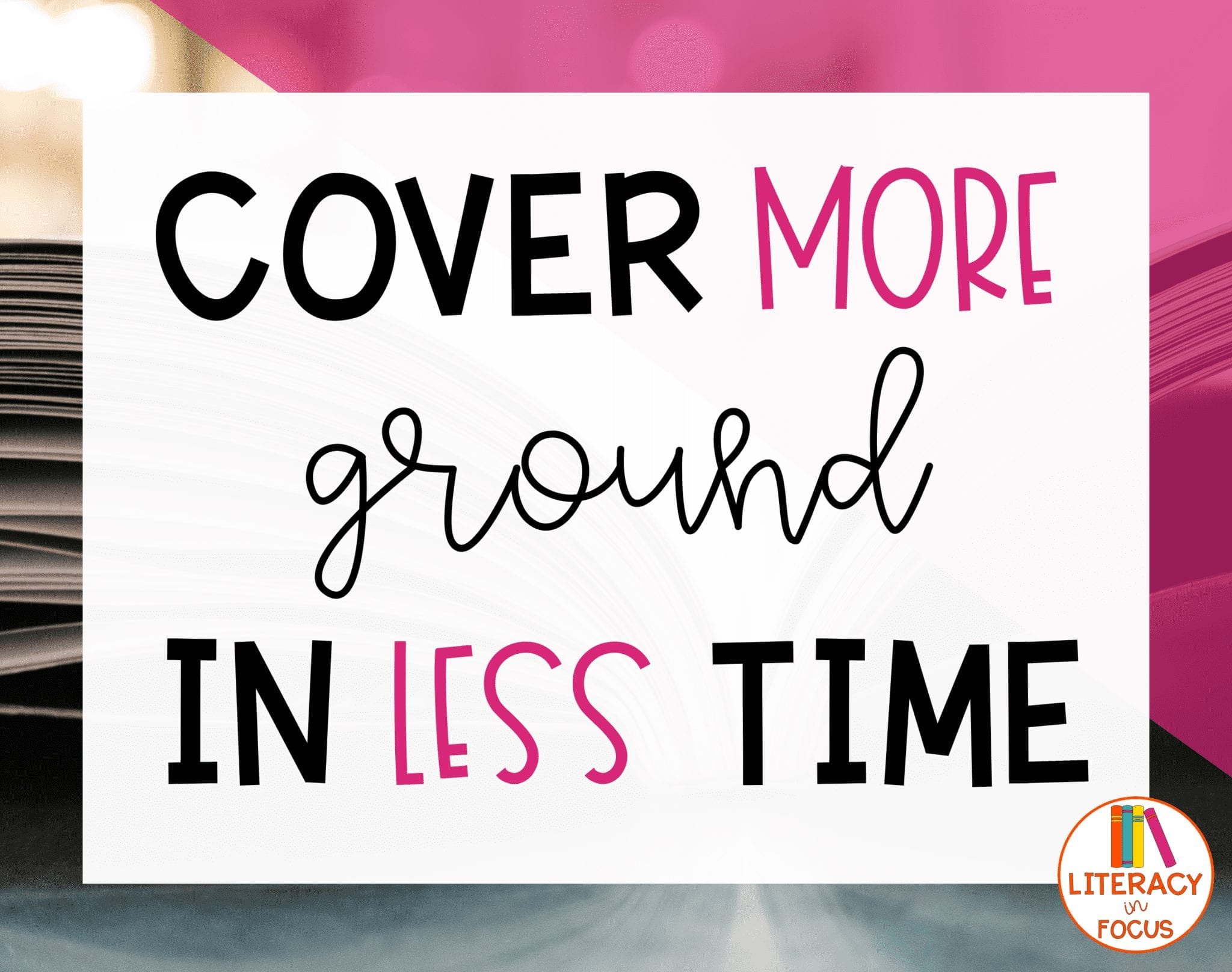
Compare and Contrast
One of my favorite ways to use timelines is to have students compare and contrast two different topics, events, or ideas. There is something magical about laying out two timelines side by side and looking for similarities and differences. It’s simply another way of using a Venn Diagram or double bubble graphic organizer to compare and contrast. To give you a more concrete idea of how I use timelines to have students compare and contrast information, I will provide you with two different examples. The first example applies to language arts. After reading a class novel, students created a timeline of events presented in the story (similar to a plot diagram, but in timeline format). I then had them research the author and create a timeline of important events in the author’s life. I wanted students to be able to identify the themes and ideas presented in the novel with the author’s lifetime of experiences. It worked perfectly. The next example corresponds with social science curriculum. I used the side-by-side timeline format for students to compare and contrast the events of the American Revolution with those of the French Revolution. The dual layout of timelines provided students with a different way of looking at the information, making it easier to identify similarities and differences between the two revolutions. With the use of the contrasting timelines, students were able to grasp the overlap of seemingly unrelated events.
Put simply, timelines provide a visual framework that supports the development of reading comprehension skills. Even better, timelines can be created on paper or with the use of technology. There are so many different options available when it comes to timeline creation. That being said, the method of creation doesn’t matter. Any format of timeline used to craft summaries, identify cause and effect, and compare and contrast will lead your students to a more complete understanding of the text. Using timelines to increase reading comprehension requires some thinking outside of the box, but once you get the hang of it, it will become second nature. The same is true for students. Ideally, they will come to see timelines in a different light as well.
Click here to download the editable US History Timeline Pennants from Literacy in Focus.
